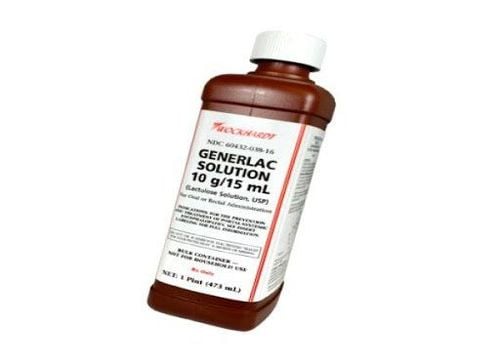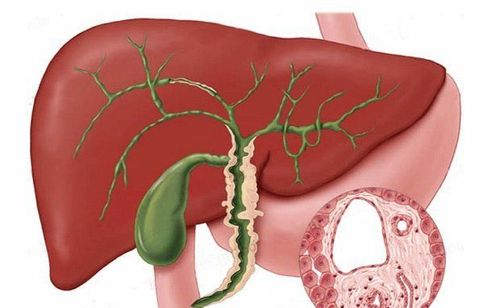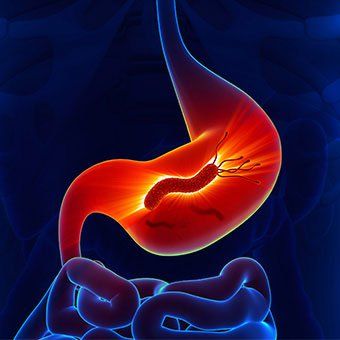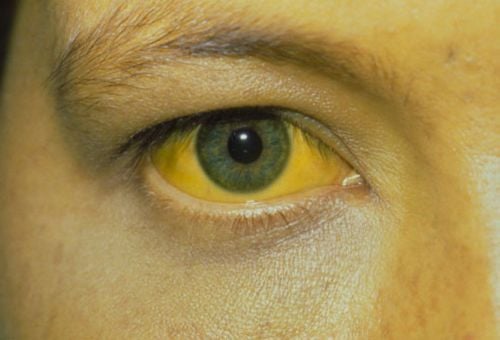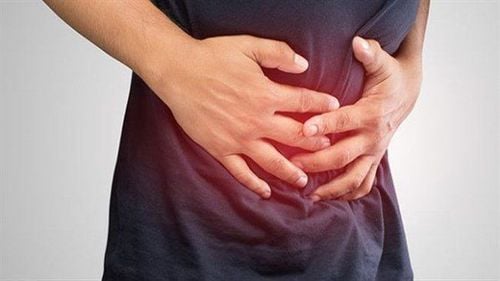This is an automatically translated article.
The article is expertly consulted by a Doctor of Gastrointestinal Endoscopy - Department of Medical Examination & Internal Medicine - Vinmec Da Nang International General Hospital.Cholestatic liver disease can cause many dangerous complications that need to be treated properly to prevent serious complications that affect health and can even be life-threatening.
1. What is cholestatic liver disease?
Cholestatic liver disease (cholestatic cirrhosis) is a condition in which bile is stagnant due to inflammation and obstruction of the bile ducts (both intrahepatic and extrahepatic), thereby leading to liver damage, causing cirrhosis. The disease is more common in men than women. Especially, it needs to be detected in time and properly treated to prevent the development of the disease.Byler's disease is a severe form of progressive intrahepatic cholestasis, a disorder of the liver's bile formation; causes progressive chronic cholestasis and eventually cirrhosis. The disease is suspected to be genetic and chromosomal. This disease usually occurs in babies under 1 year of age and can be in children under 6 months. The symptoms of cholestasis may be repeated at first, but later will persist and get worse.
Cholestatic jaundice is a yellowing of the skin with direct hyperbilirubinemia due to biliary obstruction, which can be intrahepatic or extrahepatic.
Trắc nghiệm: Làm thế nào để bảo vệ lá gan khỏe mạnh?
Làm test trắc nghiệm kiểm tra hiểu biết về gan có thể giúp bạn nhận thức rõ vai trò quan trọng của gan, từ đó có các biện pháp bảo vệ gan để phòng ngừa bệnh tật.2. What are the symptoms of cholestatic liver disease?
The onset of the disease is insidious and heralded by pruritus. As the disease progresses, physical examination reveals an enlarged liver and spleen. Jaundice lesions can be found in the skin, tendons, and around the eyelids. Diarrhea and other signs of portal hypertension are often late signs.Cholestatic liver disease often leads to ulcerative colitis or digestive diseases. Common signs of disease:
2.1 Digestive disorders Flatulence, indigestion, loss of appetite, constipation or defecation, abdominal pain in the liver area, nausea, vomiting,...
2.2 Dark facial skin Here A condition in which the skin color on the face darkens (especially in the eye area) due to a dysfunctional liver, which produces melanin, causing the skin to darken.
2.3 Fatigue, lethargy The body is tired, the limbs are weak, do not want to work much,... This is a manifestation of the liver damage causing the blood cholinesterase to decrease, thus affecting the mental function. muscle meridians.
2.4 Hemorrhage Unexplained bleeding (such as bleeding when brushing teeth,...), the appearance of hematoma on the skin,...
2.5 Spider nodules These are dilated blood vessels on the skin that spread to the spread. spreading like a spider's web, mainly appearing on the face, neck, back, arms, and chest. This expression is most obvious in patients with chronic cirrhosis
Signs to recognize severe cirrhosis (Byler's disease): Growth retardation, malnutrition, jaundice, itchy skin, body fatigue, do not want to exercise much,... itching (due to increased bile acid in the blood, which stimulates the lower nerve endings), dark urine (due to bilirubin in the urine), discolored stools, digestive disorders Hemorrhage (nosebleed, hemoptysis,...), hepatomegaly (usually 4-5m or more over the costal margin, rounded margins, soft density, slightly tight pressure), enlarged gallbladder, heart rate slow (due to increased bile acids in the blood, sometimes with extrasystolic arrhythmias),...

Mệt mỏi lừ đừ là triệu chứng thường thấy ở bệnh nhân gan ứ mật
3. Diagnosis of cholestatic cirrhosis?
3.1 Blood tests in the early stages to diagnose liver function Liver function tests reflect cholestasis with elevated alkaline phosphatase, cholesterol (especially high-density lipoprotein), and in the later stages, increased bilirubin ( cholestatic jaundice).3.2 Liver biopsy A liver biopsy is the best way to verify a doctor's diagnosis. In addition, other diagnostic methods such as CT scan, cholangiography also help in making the diagnosis more accurate.
With severe cirrhosis, to distinguish Byler's disease from cholestatic jaundice, it is necessary to use the following clinical tools:
Blood and urine tests Abdominal and hepatobiliary ultrasound Ultrasound X-ray of the hepatobiliary system Birth essential liver...
4. How to treat cholestatic liver disease?
Currently, there is no specific treatment for cirrhosis due to cholestasis. Methods are only intended to reduce the symptoms of the disease. These include: taking the drugs ursodiol and colchicine to relieve symptoms and liver damage, and taking cholestyramine to relieve itching.In addition, patients also need calcium or vitamin D supplements to prevent osteoporosis. Limit salt intake to reduce accumulation in the liver. Regular health check-ups to diagnose the progression of the disease and take timely countermeasures to avoid dangerous complications.
In severe cases, an artificial liver transplant is a good choice for the treatment of primary biliary cirrhosis.
5. Prevention of cholestatic liver disease

Tiêm phòng là biện pháp hiệu quả nhất để phòng ngừa bệnh gan ứ mật
5.2 Follow the doctor's advice and use the medicine with caution If you are sick, use the medicine scientifically according to a certain dose, the abuse of the drug will affect the liver.
Also, practice quitting bad habits such as smoking, drinking, staying up late and eating a balanced diet, exercising, making sure to sleep time and maintaining a good mood.
Replenish energy for the body, eat enough quality, on time, at the right meal,... Periodic health monitoring at reputable medical facilities, to promptly detect if sick, thereby having Timely interventions to prevent the disease from becoming too severe and difficult to treat. However, when there are symptoms of cirrhosis, a liver transplant should be done in time. With a liver transplant, the prognosis will be better. Thus, the diagnosis of Byler's disease is only the first step. It is important that the patient be monitored regularly and carefully. Avoid taking drugs that are harmful to the liver. This monitoring will help detect, treat promptly and minimize serious complications later.
The Hepatobiliary Screening Package implemented by Vinmec International General Hospital will check, monitor and evaluate your liver health status on your behalf. With a team of doctors who are highly qualified and experienced experts, with the support of advanced machinery systems, professional services, customers when participating in the package will enjoy medical benefits. The best health care, comprehensive protection of liver and gallbladder health for yourself and your loved ones.
Please dial HOTLINE for more information or register for an appointment HERE. Download MyVinmec app to make appointments faster and to manage your bookings easily.





